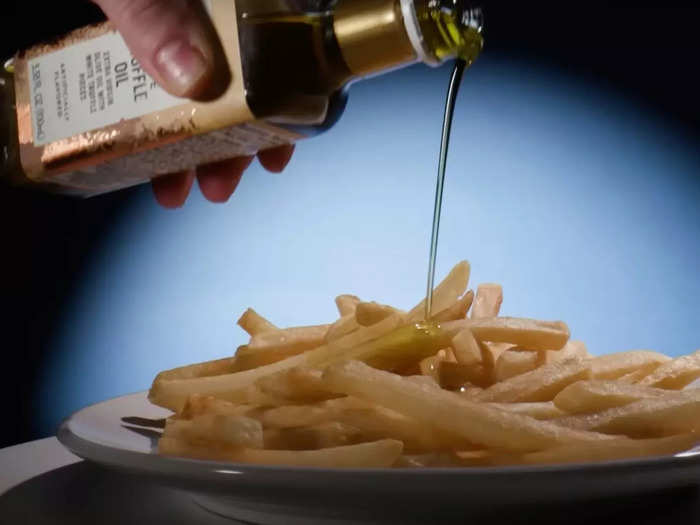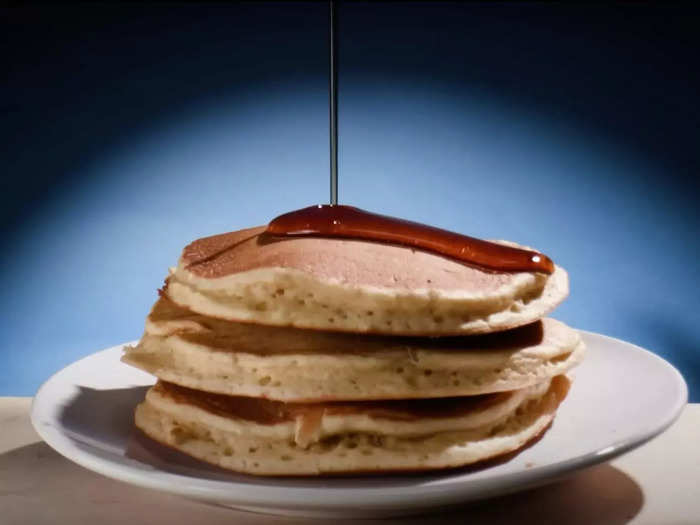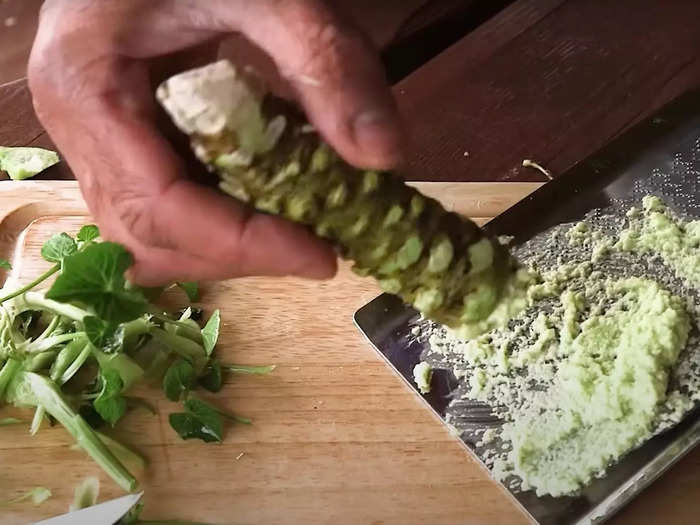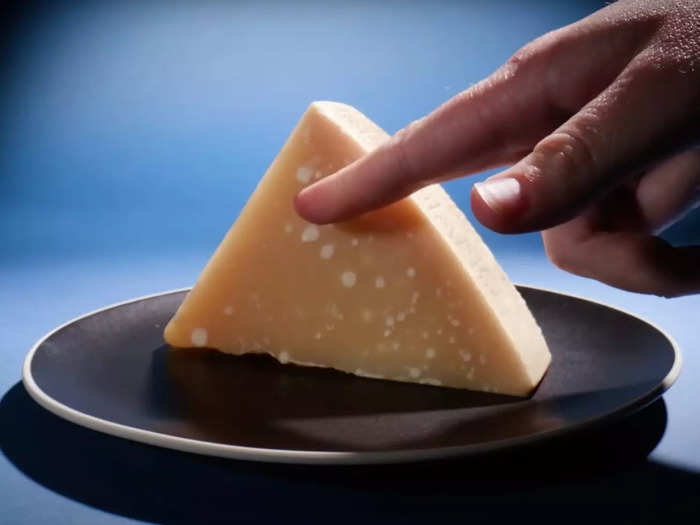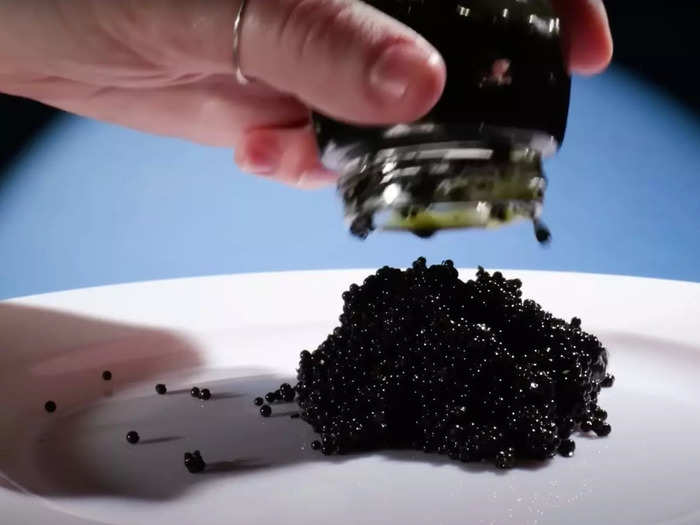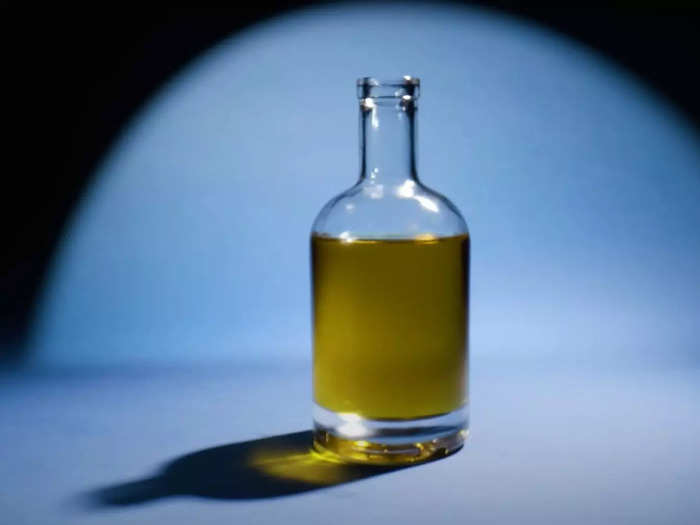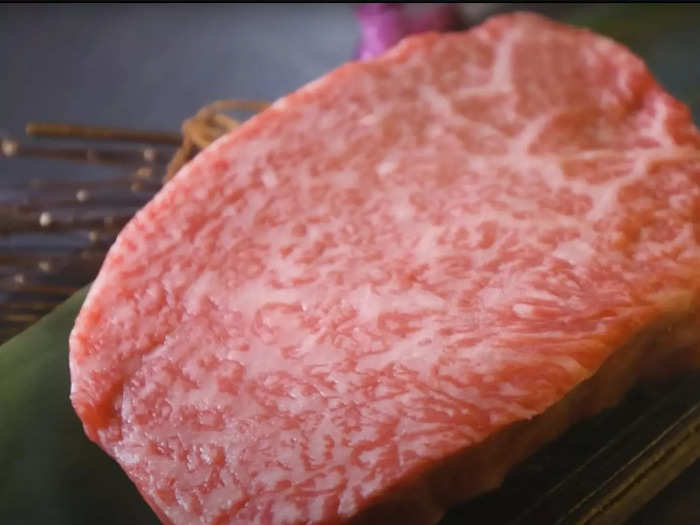Criminals and legitimate companies alike make big bucks selling less expensive substitutes for genuine honey, olive oil, Parmesan cheese, and more.Insider
- Fraudulent foods cost legitimate producers and pose a risk to consumers, to the tune of $40 billion.
- Some highly prized products – like honey or caviar – are too rare or expensive to meet global demand.
When it comes to the flavors that define modern cuisine, not everything is exactly as it seems.
Whether it's the truffle oil on your french fries, the vanilla in your ice cream, or the wasabi on your sushi, the genuine ingredients are often far too rare – or expensive – to meet global demand.
In response, both legitimate companies and criminal organizations have figured out ways to make big bucks offering less-pricey alternatives to everything from coffee to caviar.
Even as there are perfectly legal ways to do this, there is also a global fraudulent food industry estimated to be worth $40 billion per year, hurting legitimate producers, funding criminal activities, and even potentially harming consumers.
"The main reason why this happens is it's all about money," said Larry Olmstead, author of "Real Food/Fake Food: Why You Don't Know What You're Eating and What You Can Do About It."
"The sort of least end of it you're getting ripped off, at the worst end you're literally getting poisoned."
Here are 11 of the most faked food products, and how to spot the real thing.
Truffles
Insider
In spite of the ubiquity of truffle oil, actual truffles are incredibly rare.
"What is called truffle oil is entirely made in a laboratory. It has nothing to do with mushrooms," Olmstead said.
A single wild-foraged white truffle weighing 70-80 grams can fetch $102, and the fungus is a popular target for counterfeiting.
Meanwhile black truffles, which are capable of being cultivated, still take six years to grow.
As for truffle oil? That's typically a mixture of olive oil or sunflower oil, flavored with a synthetic compound derived from petroleum called 2,4-Dithiapentane — the same aromatic compound as foot odor.
The only way to be certain that what you're eating is a genuine truffle is to see it shaved in front of you, Olmstead says. "It should look like a truffle, look like a mushroom product."
Maple Syrup
Insider
As much as half of maple-style syrup is not real, often sold as "table syrup" or "pancake syrup" containing a mixture of corn syrup, caramel coloring, and flavoring.
Most of the world's genuine supply comes from Canada, which exports about 85% of the total consumed each year.
And making the sweet stuff is not easy: it takes 44 gallons of maple sap to produce a single gallon of pure syrup.
Spotting the real thing often comes down to color and texture, with pure maple syrup having a thinner consistency and cloudier appearance than artificial blends.
Wasabi
Insider
"It's funny to me when people say, 'I love wasabi, I love sushi here,' Olmstead says. "I'm thinking, 'well, you've never had good sushi, and you've never had real wasabi.'"
Nearly all the wasabi sold outside of Japan is a preparation of horseradish, sweetener, and cornstarch.
The real thing costs roughly 30 times more, and is one of the most difficult plants to cultivate commercially.
Wasabi grows naturally along Japanese mountain springs, preferring mild temperatures, shade, and the gravelly soil of the area, and the stems can sell for $319 per kilogram.
As with truffles, the best way to ensure you're getting the real thing is to see it prepared in front of you, typically with a specialized metal grater that turns the stem into a fine paste.
The other clue is the flavor: Real wasabi is less spicy and more subtle than its horseradish alternative.
Parmesan Cheese
Insider
Wine lovers know that Champagne is only Champagne if it comes from Champagne.
Likewise, Parmesan is only Parmesan if it comes from Parma, Italy, or rather the Emilia-Romagna region, which is home to the particular bacteria that give the cheese its distinctive taste.
Only 300 dairies in the area are certified to produce authentic Parmigiano-Reggiano, which must be aged for at least one year to achieve the all-important umami-flavor crystals.
Wheels of authentic Parmesan are marked with stencils and stamped DOP for "Denominazione di Origine Protetta," indicating that it came from the right place.
Italian Parmesan is readily available in most grocery stores, but other options can be less expensive for a few reasons: American-produced parmesan is only required to be aged for 10 months, while other grated blends can legally contain up to 4% of fillers, like rice flour or cellulose from wood pulp.
Vanilla
Insider
There's truly nothing "plain" about real vanilla.
The flavoring is the result of painstakingly hand-pollinated orchid flowers, whose seed pods are then harvested and massaged to release vanillin, before soaking in water and alcohol to produce an extract.
That's one reason why as little as 1% of products sold with vanilla flavor are made with authentic vanilla.
Lab-made vanillin can be derived from petroleum, using clove oil, wood, or bark to produce the artificial flavor.
This is generally harmless, but one incident in Mexico involved a producer who sold bottles that contained extract from a plant called tonka that contains a toxic substance called coumarin, which is banned in the US and dangerous for people using blood thinners.
In a side-by-side comparison, the real vanilla extract smelled more like alcohol and was more cloudy than the artificial version.
Caviar
Insider
Caviar is made from salted fish eggs, or roe, and is one of the most expensive substances on the planet.
Prices can reach $24,000 per kilogram, making the product a popular target for counterfeiters who use roe from lower-quality fish such as lumpfish.
Proper beluga sturgeon caviar requires patience – the fish must grow for 10 years before they can be killed and their egg sacks harvested. After that, the eggs have to be passed through a metal grate and salted, taking care not to rupture the delicate membranes.
It's difficult to tell the difference at a glance between $175-per-jar beluga caviar and its knockoff, but one clue is the uniform shape and glossy shine of the authentic product.
Another test is to place a few of the eggs in hot water. The real caviar will cook and become hard, while imitation roe will dissolve.
Honey
Insider
Honey may be one of the more surprising entries on this list, but estimates indicate that as much as one-third of internationally traded honey is fake.
In short, global demand is simply more than bees can keep up with.
Most of the world's honey comes from China, which also happens to be where the adulterated versions originate too.
To round out the supply, some producers blend real honey with artificial fillers like corn syrup, glucose, or rice, cane, or beet sugars.
That processing – or any processing, really – tends to destroy the best nutritional and health qualities of natural honey, turning it into so much cheap sugar, according to writer and honey sommelier Sarah Wyndham Lewis.
"I feel it's the biggest secret food fraud that has ever been perpetrated globally," Lewis said.
To get the best of what the bees make, Lewis recommends that people avoid any "blends" and buy locally sourced raw honey, preferably from a farmers market.
The artificial product is still useful though – it makes a great skin and hair mask, Lewis said.
Extra Virgin Olive Oil
Insider
Extra virgin olive oil has been a target of food fraud since the days of ancient Rome, where criminals would sell inferior olive oil, or blends of other oils, under the prized EVOO designation.
Most extra virgin olive oil still comes from Spain, Italy, or Greece, where it is freshly squeezed from ripe olive, using no heat or chemicals.
Vibrating machines shake fruit loose from olive trees, which is then ground to thick paste, spun, pressed. High-quality EVOO can run $10 per 17-ounce bottle. Olive oil fraudsters have set up operations in the midst of legitimate ones, so spotting fakes can be especially difficult without a taste test.
Experts also recommend steering clear of anything without the "Extra Virgin" label, such as "Blend" or "Light" formulations. The "pressed on" date should also be less than a year ago, since EVOO tends to lose its fruity, grassy flavor after about two years.
Wagyu Beef
Insider
Wagyu simply means "Japanese cattle," and refers to four breeds: Kuroge, Akage, Mukaku, and Nihon Tankaku.
In Japan, tight regulations govern the raising and processing of the animals, which are given a diet of rice and corn that gives the meat a distinct tenderness and marbling.
In some cases, a single pound can fetch $200, while an entire cow can sell for $30,000 – 10 times the price of an American Black Angus.
Since Japan only exports a limited amount of Wagyu beef, most of the so-called Wagyu eaten by the rest of the world is not exactly up to the same standard.
In the US, ranchers interbreed Wagyu cows with hardier stock, and government regulations only require one parent of a cow to be Wagyu (with 93.7% genetic match) in order to market its meat as Wagyu beef. That beef would have just a 46.9% genetic match.
When the fast food chain Arby's advertised a Wagyu burger, the patty was made with just 51% American Wagyu plus 49% regular ground beef, so only about a quarter of the meat was genetically Wagyu.
Besides, true Wagyu is too tender to make for a good hamburger anyway.
Coffee
Insider
"Coffee is big, big, big business and historically it has been cut with anything that's brown: burnt paper, burnt corn, sawdust," Larry Olmstead said.
Ground coffee has also been augmented with ground acorns, barley, and wheat.
Whole-bean coffee naturally tends to have less filler, but the challenges of growing and cultivating large amounts of it can lead to significant differences in quality.
It takes some 1,500 coffee cherries to make 1 pound of beans, and the best coffee producers use only hand-picked ripe cherries. Skins are removed, and the seeds are dried and roasted.
Harvesting machines on the other hand don't discern between ripe and unripe cherries, gathering both and processing them together.
The many steps in the coffee supply chain make the origin of beans hard to track, but reputable roasters and organizations like the Specialty Coffee Association can help identify quality product.
Saffron
Insider
Saffron, the world's most expensive spice, comes from the strands, or stigmas, of the Crocus Sativus flower.
Farmers in Kashmir take two years to grow flowers and harvest them, needing 150,000 flowers to yield a kilogram of saffron, which is worth about $3,000.
It's a labor-intensive process, in which stigmas must be removed by hand, snipped, and sorted. Fraudsters seek to imitate the product with red-dyed hay, horsehair, coconut filaments, or plant roots.
The Kashmiri government has even introduced a trading center with a geographical indicator (GI) tag to certify authenticity.
As with caviar, a water test can reveal what's real and what is fake: real saffron slowly releases a yellow color into the water, while the yellowing is almost instant with artificial versions. Real saffron also disintegrates easily, while fake stays intact after wetting.
"Paying more for products does not assure their validity, but paying less kind of assures their invalidity — you're not going to get cheap saffron," Larry Olmstead said.

